
views
X
Research source
If armpit sweat is something you are embarrassed about or something you feel you want to control, there are steps you can take to limit the amount of sweat produced by your armpits.
Reducing Sweating Naturally
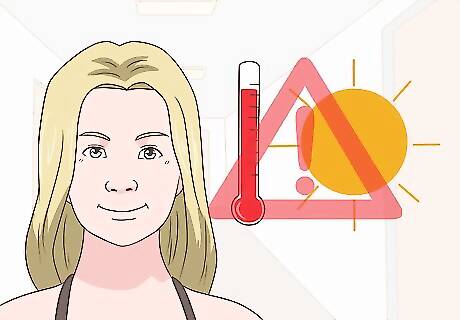
Avoid warm temperatures. One reason that sweating occurs is to keep the body cool. If you live in a place where the weather is warm or if your work or school keeps the thermostat high, then your body is more likely to produce sweat. Thus, if you do not want to sweat, you should do your best to avoid warm temperatures.
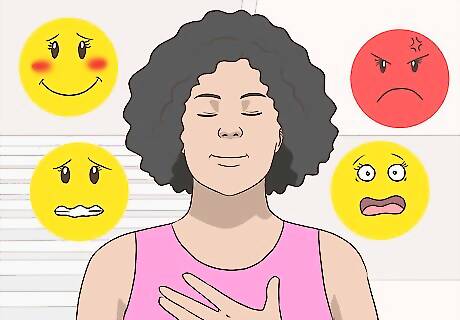
Try to stay calm in situations where you feel embarrassed, nervous, angry, or afraid. This is not easy to do, but when you experience these feelings your autonomic nervous system reacts by producing sweat. Therefore, do your best to remain calm.
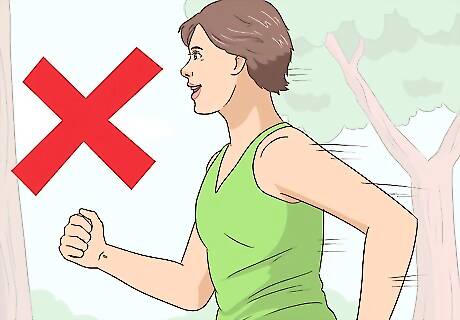
Avoid exercise. While exercise is important for maintaining a healthy lifestyle, it is also another reason your body produces sweat. When you exercise, you raise your body temperature, so you sweat to keep cool. Thus, if you do not want to sweat, you should stick to exercises such as swimming, where it will not be obvious that you are sweating.
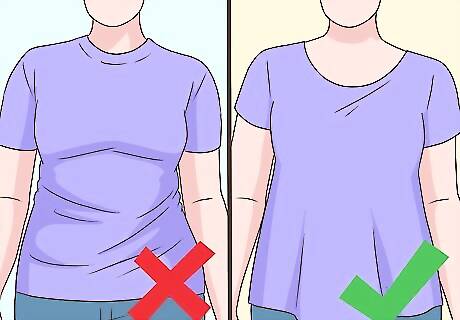
Wear loose fitting clothing, or sleeveless shirts. If your clothes are tight and close to your skin, the clothing is more likely to absorb sweat. Additionally, close fitting clothes may make you feel warmer, causing sweating. Therefore, you should stick to clothing that is loose. This will also allow air to circulate.

Avoid tightly knit clothing. The more tightly knit a shirt is, the less it breathes and the warmer you will feel. Silk, for example, is a bad choice if you want to avoid sweating as it is tightly knit. Shirts that are loosely woven, will allow more air to circulate.
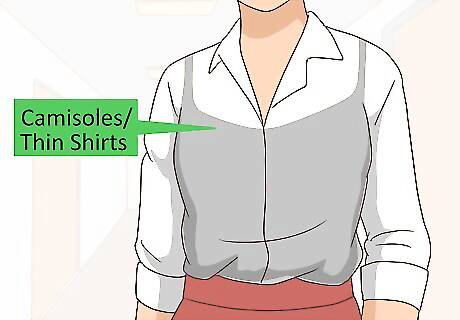
Wear layers. For some people, this step is easy, since they often wear undershirts. However, as a girl, you can also use this method. The idea is that by wearing a few layers, you have more fabric to absorb the sweat. Thus, it is less likely that sweat shows through the outermost layer. Consider camisoles, or thin shirts, which you can wear underneath your shirt for the day. You can even bring an extra one along in case you want to change.
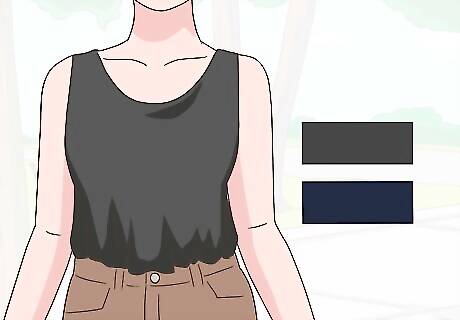
Wear dark colored clothing. Colors such as navy and black are good at hiding most wet sweat marks that appear underneath your arms. Additionally, white usually also does a pretty good job of hiding sweat. Colors to avoid include: Grey, bright colors, as well as most light colors, which will all show sweat. You should avoid these so if you do sweat, it won't be that obvious.
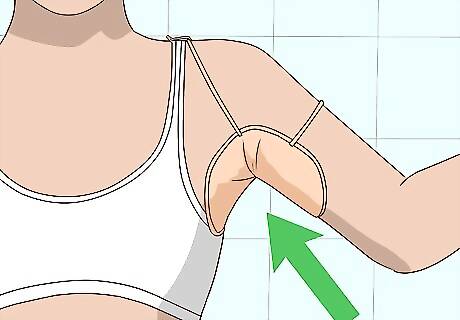
Consider purchasing dress shields. This product goes by many names (e.g. underarm shields, garment protectors, sweat pads, etc.), but the function is the same. The pads will either stick to your skin or have straps to go around your arms. As you sweat, the shields absorb the sweat so it doesn’t show up on your clothes.

Use baby powder on your armpits. Baby powder (which is typically made of talcum powder and added fragrance) can help to absorb excess sweat. Additionally, talcum acts as an astringent, meaning that it causes your pores to restrict, which helps lessen the sweating.

Give your armpits time to breathe. This may sound silly, but if you are sweating a lot, you can raise your arms over your head for a few minutes (if you are alone) or place your elbows on your desk (if you are at school or work) to allow some air to circulate under your arms.
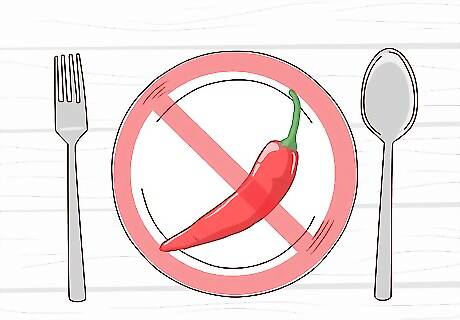
Avoid spicy foods. Food that is very spicy can cause you to sweat more. If you want to reduce the amount you sweat then avoid spicy foods such as jalapeños. Additionally, foods such as garlic and onions can cause your sweat to smell worse. If you are concerned about this, then you should also avoid these.
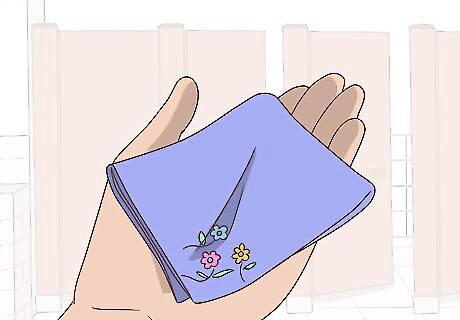
Carry a handkerchief. While you may not always have the opportunity to wipe away sweat discreetly, having a handkerchief with you will give you something to wipe the sweat away when it is unavoidable. You can also keep a small towel in your bag instead of a handkerchief.
Reducing Sweating with Over the Counter Products
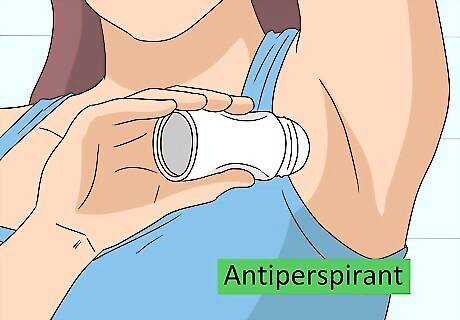
Use antiperspirant. As the name suggests, antiperspirants are meant to avoid sweating (perspiring). Antiperspirants are widely available, and most deodorants sold today contain an antiperspirant. Typically, these products come in different strengths. It is best to start with the lowest strength product. If that doesn’t solve your sweating problem, then try the next strength level. Antiperspirants work by creating a coagulant that clogs the pores.

Apply Antiperspirant at night, before going to bed. The antiperspirant solution will be diluted if you sweat shortly after using it. At night, you are moving around less, and less likely to sweat.
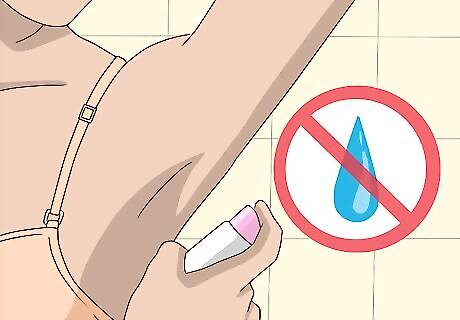
Make sure your skin is completely dry before applying antiperspirant. This will help your skin from becoming irritated, and will also help the antiperspirant to work better (since it works best if it does not become diluted).

Give a product you are trying out at least 10 days to work. It may take time for the antiperspirant to clog the pores. If the product is not working after only a few days, don’t worry, the product may just need a few more days.
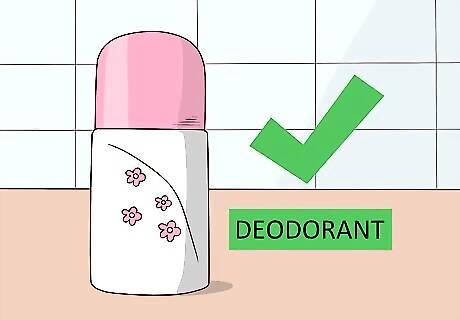
Use deodorant to avoid body odor. In addition to an antiperspirant, you can also apply a deodorant. When sweat interacts with bacteria on the skin, it becomes odorous. Deodorant kills the bacteria to prevent this odor. Fragrance is commonly added to mask any smell that might occur. Sometimes antiperspirants may also include a deodorant and vice versa. Read the label of your current antiperspirant or deodorant carefully to check.
Considering Medical Treatments for Excessive Sweating

See a dermatologist. If you are not able to control your sweating using the previous methods, then a visit to your dermatologist is a good idea. Dermatologists are typically the best type of doctor to see for this problem, as they deal with skin, and are often familiar with treatments for excessive sweating (also known as hyperhidrosis). Be aware that you may need a referral from your regular doctor to see a dermatologist, be sure to check with your insurance company to see if this is necessary.
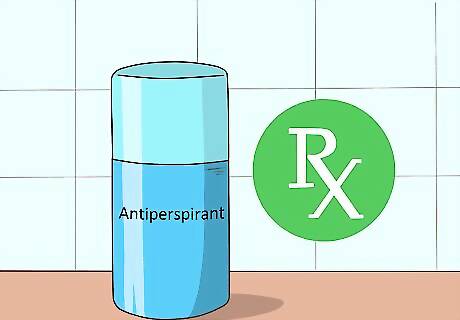
Ask for a prescription strength antiperspirant. If none of the over the counter products you have tried are working, your dermatologist may be able to prescribe you a prescription strength antiperspirant that you would not be able to purchase on your own. The same procedure as for over the counter products will likely apply for application. Be sure that you do it at night before bed, and that your armpits are completely dry. Read the information that comes with your prescription carefully. There may be special application instructions, instructions about how often to use, side-effects to be aware of, etc. You can speak to your doctor about a variety of treatments ranging from topical solutions (Drysol), wipes (Brea), oral medications (glycopyrrolate), injections with neuromodulators, and laser treatments.
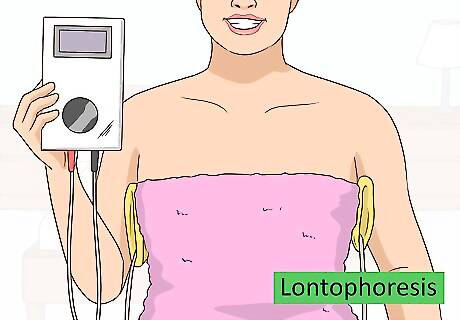
Consider trying Iontophoresis. If prescription strength antiperspirant doesn’t help, you might consider alternative treatments. One of these is known as Iontophoresis. Although most commonly used for sweating of the hands and feet, it can be used for armpits as well. The procedure involves placing the affected area into water, through which a mild electric current is passed. The procedure works well for many, but multiple treatments are often required, and the physical structure of the armpit can often make treatment a bit impractical.
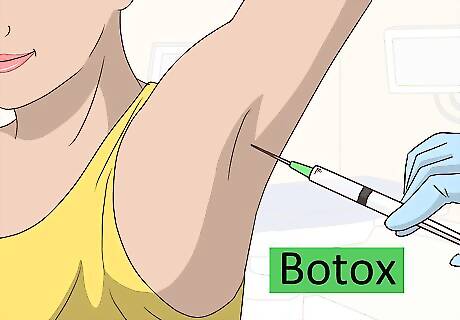
Ask about Botulinum toxin type A (Botox) injections. You may have heard of Botox injections as a method of avoiding wrinkles; however it can also be used to treat excessive sweating. Botox works by essentially “turning off” the sweat glands in the affected area. Be aware that this treatment can be painful, and only works for a few months at a time.
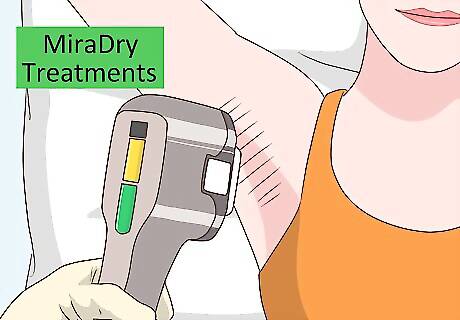
Ask about miraDry treatments. MiraDry is a fairly new treatment method, approved by the Food and Drug Administration in 2011. This treatment works by using electromagnetic energy to destroy the sweat glands in the affected area (and is most commonly used for armpits). Typically, two treatments are done over a period of a few months. As of now, it does not appear that the sweat glands will grow back. The procedure typically lasts about an hour, and uses a local anesthetic. There may be a bit of redness, tenderness, and swelling for a few days after the procedure, but mild pain medication can be used to help with this, along with the use of ice packs.

Consider surgical methods for reducing sweating. Although typically only used in very severe cases of hyperhidrosis, surgery offers another option to control sweating. There are many surgical techniques used to deal with the problem, but they all have the ultimate goal of removing sweat glands in the affected area. Typically, these surgical procedures are performed in a doctor’s office under local anesthesia, which means that you will not be asleep. Only the affected area is numbed.










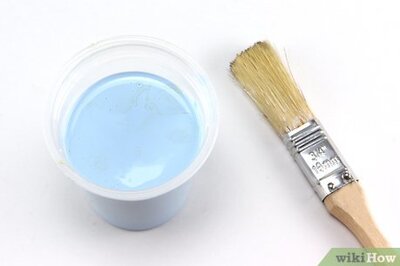









Comments
0 comment